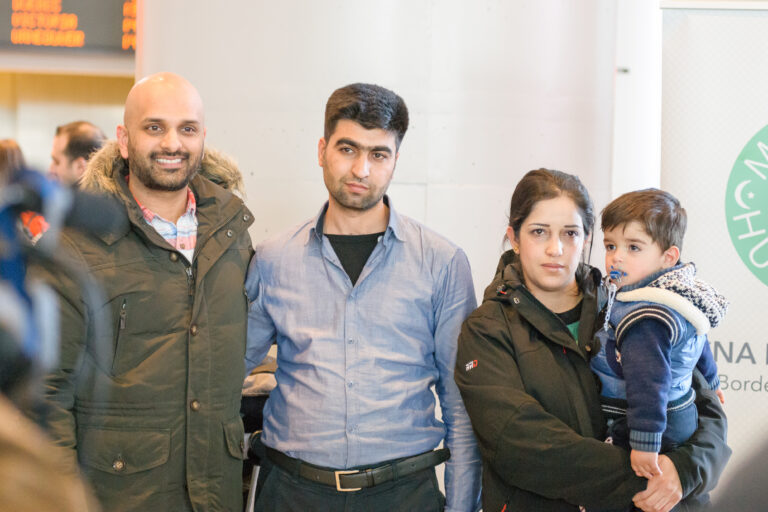The Alberta Advantage Immigration Program (AAIP) conducted four draws from Aug. 3 through to Aug. 22, issuing 604 Notifications of Interest (NOI) through the Express Entry-linked Provincial Nominee Program (PNP).
Read more:
Use the CMHC to build more housing for international students and ease housing affordability pressure, says expert
MPNP issues 615 Letters of Advice to Apply through three immigration streams
RNIP generated $11.6 in wages to Thunder Bay’s economy in its first year of operation alone
The AAIP issued 201 NOIs to candidates with a family connection and skills and experience in a primary occupation in demand with minimum Comprehensive Ranking System (CRS) scores of 315 on Aug. 3.
Healthcare, construction workers among those targeted for NOIs in latest draws
Then, on Aug. 15, the provincial immigration program sent out 14 NOIs to Dedicated Healthcare Pathway (DHP) candidates with a job offer in Alberta and a minimum CRS score of 326.
The next day, the AAIP followed that up with 300 invitations to candidates in the tourism and hospitality sector who had job offers and a minimum CRS score of 408.
And then, on Tuesday this week, the province targeted construction workers who had job offers in Alberta and a minimum CRS score of 303, inviting 89 of them to apply for immigration to the province.
Alberta Express Entry 2023 Draws
| Date | NOIs sent | Parameters | Lowest CRS |
| 22 – Aug. – 23 | 89 | Priority sector – Construction occupation with Alberta job offer, CRS score 300-500 | 303 |
| 16 – Aug. – 23 | 300 | Priority sector – Tourism and hospitality occupation with Alberta job offer, CRS score 300-500 | 408 |
| 15 – Aug. – 23 | 14 | Dedicated Healthcare Pathway with Alberta job offer, CRS score 300 and above | 326 |
| 03 – Aug. – 23 | 201 | Family connection and primary occupation in demand, CRS score 300-500 | 315 |
| 01-Aug-23 | 32 | Priority sector – Agriculture occupation with Alberta job offer, CRS score 300-500 | 322 |
| 01-Aug-23 | 11 | Dedicated Healthcare Pathway, Alberta job offer, CRS score 300 and above | 317 |
| 18-Jul-23 | 14 | Dedicated Healthcare Pathway, Alberta job offer, CRS score 300 and above | 311 |
| 13-Jul-23 | 142 | Family connection and primary occupation in demand, CRS score 300-500 | 302 |
| 11-Jul-23 | 150 | Priority sector – Tourism and hospitality occupation with Alberta job offer, CRS score 300-500 | 435 |
| 04-Jul-23 | 12 | Dedicated Healthcare Pathway, Alberta job offer, CRS score 300-1200 | 354 |
| 29-Jun-23 | 65 | Priority sector – Construction occupation and French as first language, CRS score 300-500 | 316 |
| 22-Jun-23 | 125 | Family connection and primary occupation in demand, CRS score 300-500 | 306 |
| 21-Jun-23 | 19 | Dedicated Healthcare Pathway, Alberta job offer, CRS score 300-1200 | 318 |
| 20-Jun-23 | 68 | Priority sector – Construction occupation with Alberta job offer, CRS score 300-500 | 301 |
| 08-Jun-23 | 150 | Priority sector – Agriculture occupation and French as a first language, CRS score 300-500 | 382 |
| 01-Jun-23 | 117 | Family connection and primary occupation in demand, CRS score 300-500 | 304 |
| 30-May-23 | 20 | Priority sector – Agriculture occupation with Alberta job offer, CRS score 300-600 | 342 |
| 23-May-23 | 5 | Designated Healthcare Pathway, Alberta job offer, CRS score 300-1200 | 401 |
| 11-May-23 | 119 | Family connection and primary occupation in demand, CRS score 300-500 | 311 |
| 09-May-23 | 175 | Priority sector – Tourism and hospitality occupation with Alberta job offer, CRS score 300-600 | 444 |
| 09-May-23 | 8 | Designated Healthcare Pathway, Alberta job offer, CRS score 300 and above | 307 |
| 25-Apr-23 | 8 | Designated Healthcare Pathway, Alberta job offer, CRS score 300 and above | 316 |
| 24-Apr-23 | 124 | Priority sector – construction occupation with Alberta job offer, CRS score 300-500 | 301 |
| 20-Apr-23 | 152 | Family connection and primary occupation in demand, CRS score 300-500 | 302 |
| 18-Apr-23 | 68 | Sector priority – Agriculture occupation with Alberta job offer, CRS score 300-700 | 307 |
| 05-Apr-23 | 53 | Designated Healthcare Pathway, Alberta job offer, CRS score 300-600 | 351 |
| 30-Mar-23 | 150 | Family connection and primary occupation in demand, CRS score 300-500 | 372 |
| 09-Mar-23 | 134 | Family connection and primary occupation in demand, CRS score 300-500 | 301 |
| 16-Feb-23 | 100 | Family connection and primary occupation in demand, CRS score 300-500 | 357 |
| 23-Jan-23 | 154 | Family connection and primary occupation in demand, CRS score 300-500 | 385 |
| 19-Jan-23 | 46 | Family connection and primary occupation in demand, CRS score 300-500 | 324 |
Alberta has an allocation of 9,750 provincial nominations for 2023, up from 6,500 in 2022, and has issued 6,607 nominations so far this year.
Ten jobs come with longer application processing times
Due to a high number of AAIP applications received in the following occupations, Alberta immigration officials have indicated they may take longer to process:
- 62020 – food service supervisors
- 62010 – retail sales supervisors
- 63200 – cooks
- 13110 – administrative assistants
- 12200 – accounting technicians and bookkeepers
- 73300 – transport truck drivers
- 21222 – information systems specialists
- 60020 – retail and wholesale trade managers
- 65201 – food counter attendants, kitchen helpers and related support occupations
- 21231 – software engineers and designers
In order to be eligible to receive an NOI under the Alberta Express Entry system, candidates must:
- have an active Express Entry profile in the federal Express Entry pool;
- have stated an interest in immigrating permanently to Alberta;
- be working in an occupation that supports Alberta’s economic development and diversification, and;
- have a minimum CRS score of 300 points.
Factors that may improve a candidate’s chances of receiving an NOI include:
- a job offer from an Albertan employer and/or work experience in Alberta;
- having graduated from a Canadian post-secondary institution, and;
- having a relative residing in Alberta such as a parent, child and/or sibling.
Factors that decrease a candidate’s chances of receiving a notification of interest include having an Express Entry profile due to expire within the next three months and working in an ineligible occupation.









